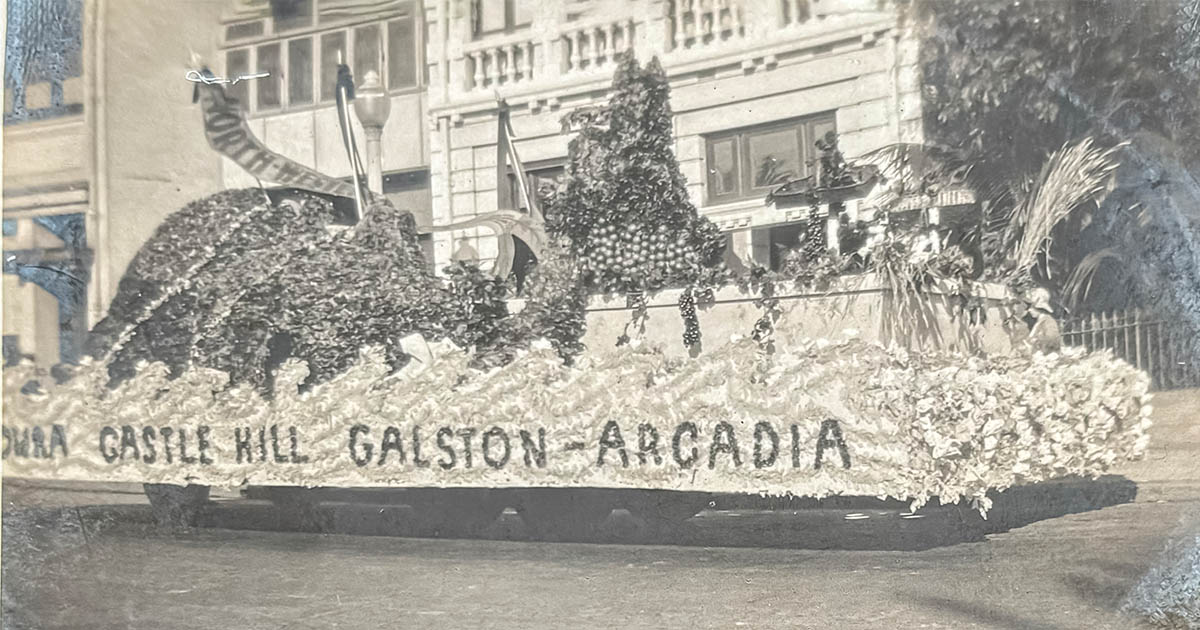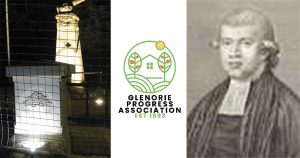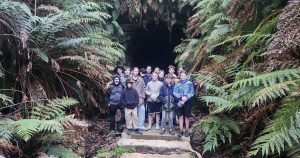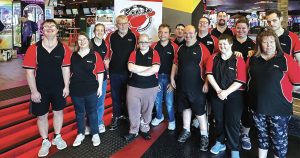On the 19th March 1932 an Irish immigrant, a resident of the Hills district, caused a stir in the annals of Australian history. The occasion was the official opening of our first road crossing of Sydney Harbour – The Sydney Harbour Bridge.
The bridge was to be officially opened by the Premier Jack Lang, when the diminutive Irishman, Francis Edward de Groot, mounted on a horse borrowed for the occasion, charged forward brandishing a sword and slashed the ribbon at the entrance the bridge, shouting “I declare this bridge Open in the name of the people of New South Wales”.
De Groot was a member of the Fascist organisation named “The New Guard” who were vehemently opposed to Jack Lang, the Labor Premier of New South Wales, who they believed was a Communist sympathiser. Upon the Police disarming de Groot and arresting him it was thought that he was a lunatic and the Police charged him as such but he was later pronounced sane.
Colonel Eric Campbell, a Solicitor from Turramurra, was the leader of the New Guard and declared that had acted with the full approval of the Executive Council of the New Guard.
Subsequently, de Groot sued the NSW Government on the grounds that a police officer had no right to arrest an officer of the Hussars (de Groot had served in the British Army in the 15th Hussars during WW1 and had kept his sword from this period) in which he was awarded what amounted to around $138 in damages for wrongful arrest.
After his arrest, Francis de Groot is reported to have said, “Of course having ceased to even looking like fighting, I was easy, and accordingly about 14 large pair of hands tried to obtain a grip on some portion of me, not all with success because a lack of space…
Tempers soon simmered down, my foot was released from the stirrup, and I was hurried into the toll house, where I remained for about an hour, whilst Lang, his Cabinet and Cops debated what best to do with me.”
As well as being noted for his membership of the New Guard, de Groot was an antique dealer and a furniture manufacturer and was commissioned to make a chair for the first Australian born Governor-General, Sir Isaac Isaacs.
The chair was last exhibited at the Centenary of Federation in 2001 at Centennial Park, by Governor-General, Sir William Deane. Regrettably, on the day, no commentator mentioned that the chair had been hand-crafted by de Groot. The chair is now in the Mitchell Library NSW State Library. Among his clients for handmade furniture was Dame Eadith Walker of Yaralla at Concord.

Prior to his death in Ireland, de Groot indicated he would like to see the sword returned to Australia. In 2004, the sword was found on a farm in County Wicklow, in the possession of de Groot’s nephew.
Plans were announced to have it valued and returned to Australia, possibly as a display at the National Museum of Australia. However, the Museum was outbid by Paul Cave, the founder and chairman of BridgeClimb Sydney, the tourism company that conducts climbs across the Harbour Bridge.
The sword was presented to Bridge Climb Sydney by prior students of Blackrock College, De Groot’s old school, during a school reunion for ex-students now living in Australia.
The home in which Francis de Groot lived “Dunrath House” is currently still standing at139 Castle Hill Rd, West Pennant Hills (Cherrybrook) and is currently owned by Top Place Development who are currently in receivership and controlled by controversial developer Jean Nassif who is believed to be in Lebanon.
It was sold to Top Place for $42 million in 2015 and is subject to Heritage Protection by Hills Shire Council.
Previous owners of Dunrath have included the artist William Dobell, radio personality Frank Clune and printer and publisher Bob McMillan. De Groot died in Dublin in 1969 age 80.






